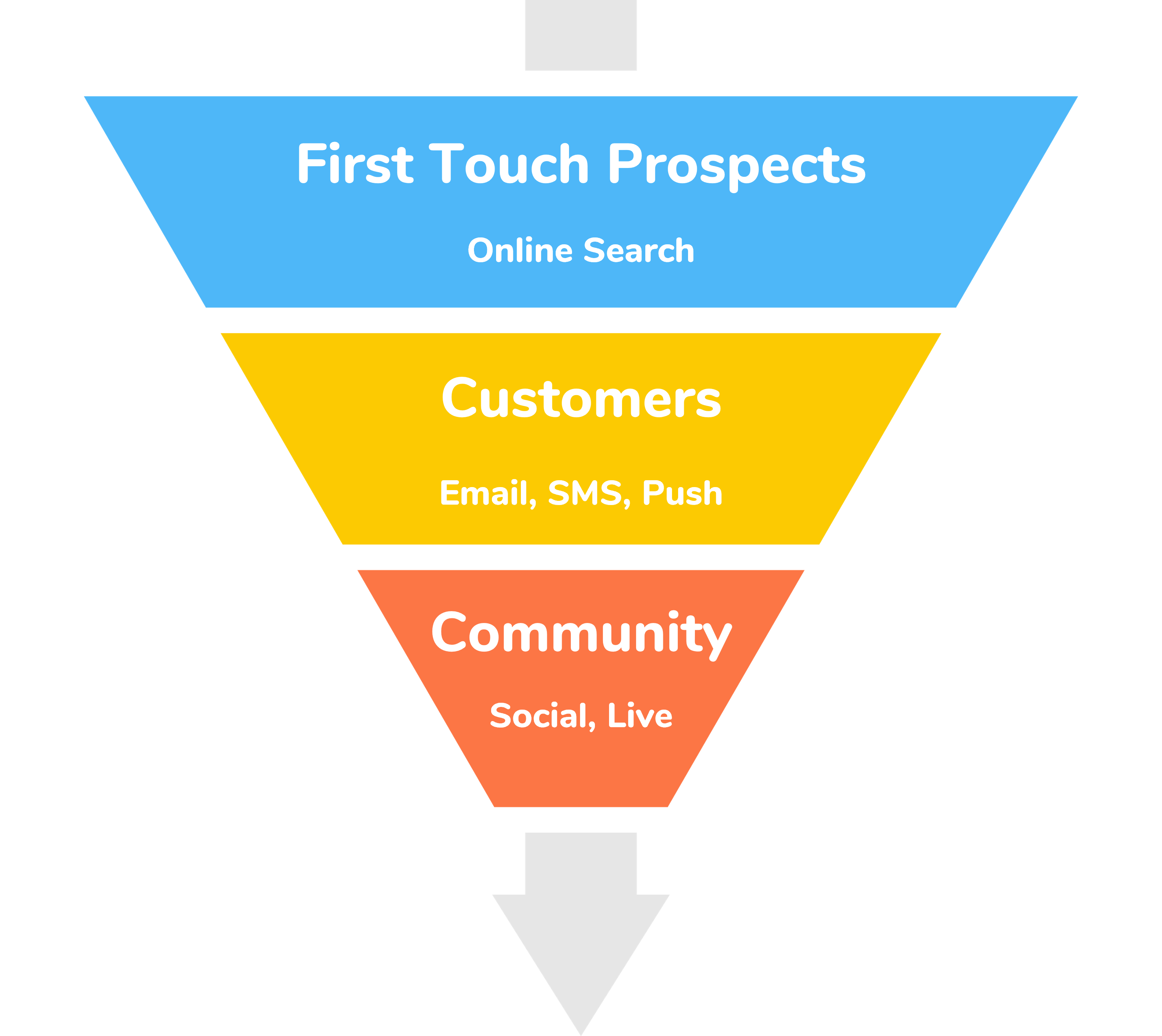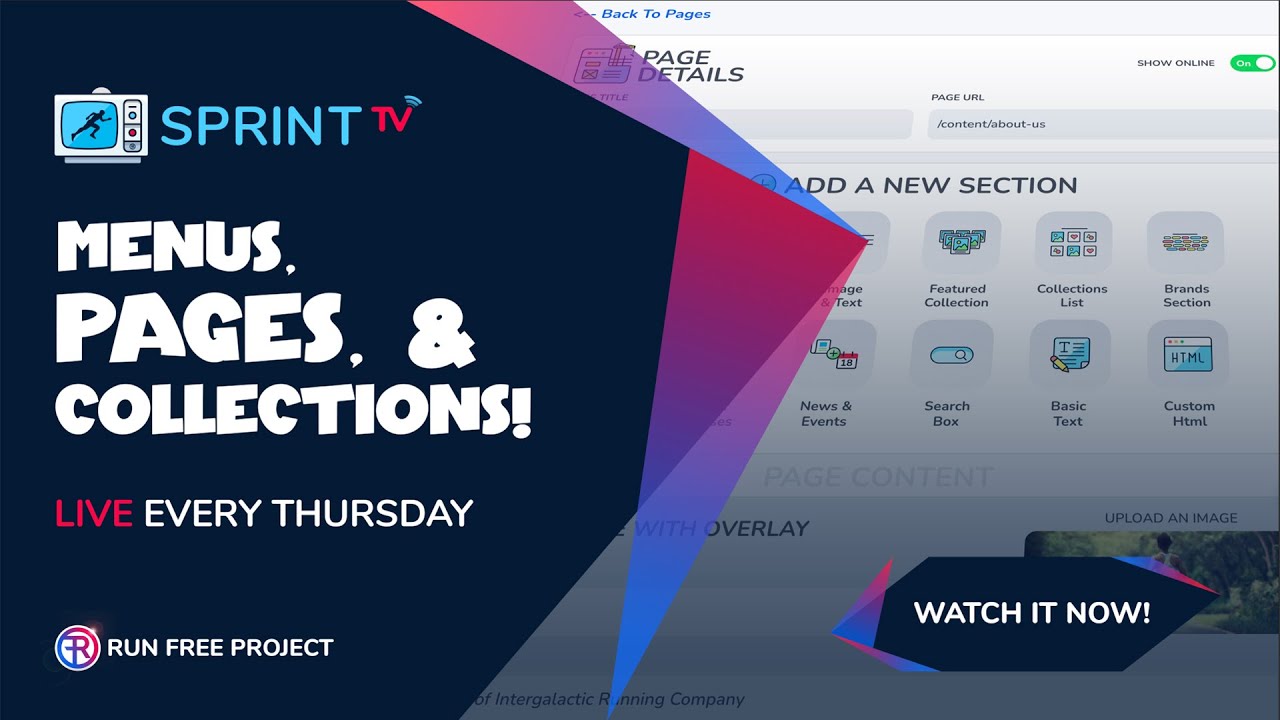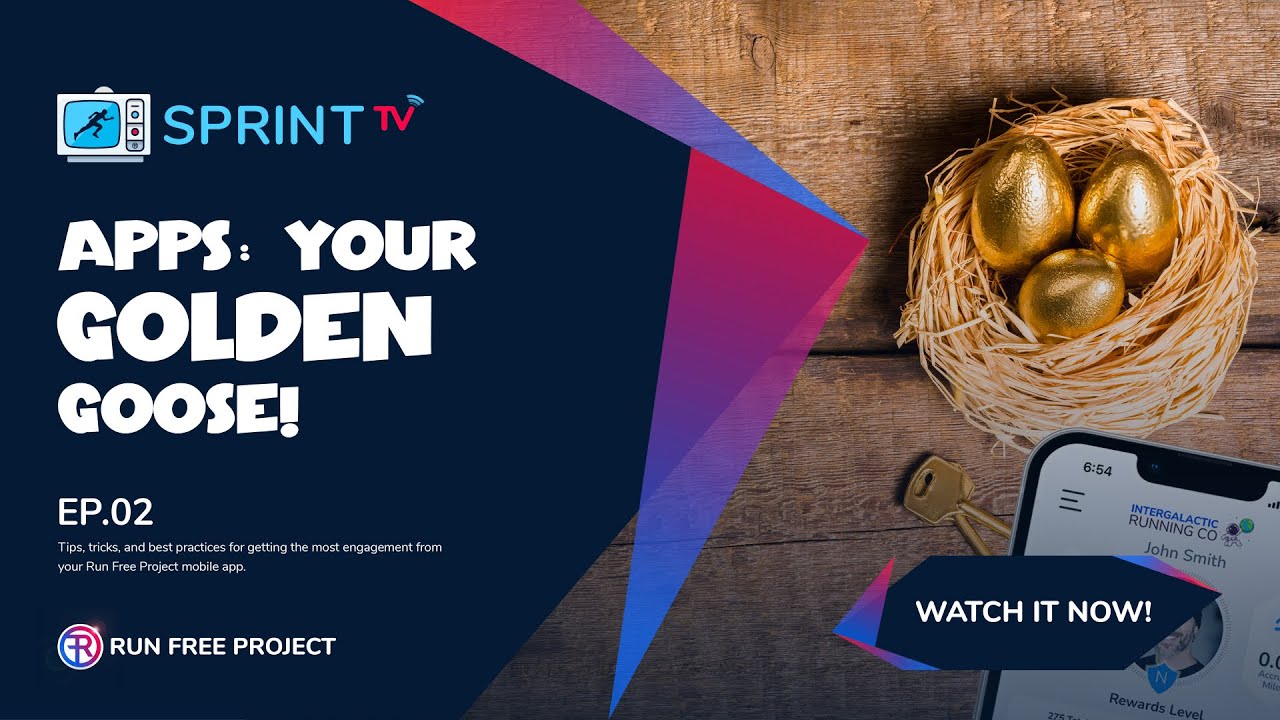As an industry on the whole, run specialty retail was a late arrival to the world of online commerce.
A Running Industry Association (RIA) Retailer Survey found that in 2019, only 27% of running stores reported having an eCommerce presence. The onset of the pandemic and subsequent rapid shift towards online-centric consumer behavior drove many running stores to adopt eCommerce for the first time in earnest during the spring of 2020. By the end of the year, 90% of run specialty retailers had an active eCommerce presence. On a positive note, this rapid adoption catapulted the industry into the digital era, an evolutionary step it had been putting off for too long. Unfortunately, the rush to get online meant skipping an education in best practices for maximizing that investment. Now, two years later, as marketing strategies and budgets are set, many running stores find themselves asking:
What are the top mistakes running stores make online?
It begins with avoiding common pitfalls. We’ve compiled a list of the top 5 most common mistakes running stores make online in 2023. Avoid them and you’ll find success online.
Run Specialty’s Great Online Migration
The industry’s overnight online migration created incredible opportunity for retailers forced to shudder their brick and mortar businesses in the early months of the pandemic. In fact, it became the lifeblood of the industry at the time.
As the months wore on (and online-centric consumer behavior remained), the eCommerce successes some running stores celebrated in the early days of the pandemic began to wane. At Run Free, we’ve been fortunate to occupy a unique perspective as the market’s experience with eCommerce has panned out. Our role as an eCommerce platform provider designed specifically for running stores has given us broad visibility into the strategies of retailers who have achieved online success and those who still have a ways to go.
Why Should You Care About Online?
If your in-person focus has been so successful over the years, why worry about online at all? Well, because online is where almost all of your new customers come from.
If you have kids or grandkids, you’re keenly aware of how much time they spend glued to their devices. As a whole, the younger, digitally-native generation (people 40 and under) manages their lives almost entirely online. This isn’t anything new, it was this way before the pandemic. However, during the onset of COVID, consumer behavior across all demographics fundamentally changed. A study published in mid 2021 by PwC found that the use of smartphones for online shopping had more than doubled since 2018. Another significant finding from the report was that consumers did not think they’d go back to their old ways of shopping once the pandemic was over. Spoiler alert: They didn’t. And you may not realize it, but neither did you.
Think about it. What’s the first thing you do when you need information? It doesn’t matter what subject is, whether it’s did Lance actually know Caballo Blanco, how many ounces are in a gallon, or which Mexican restaurants are in the vicinity, you go to the internet and conduct a Google search. So does 97% of the rest of humanity.
The experience usually plays out like this: You go to Google, you search for a store near you that might carry an item you need, you give them a quick once over, and if what you find seems interesting, you head over to that store to make a purchase. You’re not alone in this experience. It turns out 76% of people who conduct a local search on Google set foot in a physical store they discovered in those search results within 24 hours.
In other words, almost every single one of your prospective customers will have their very first experience with your running store online.
And if you aren’t showing the same loving care and concern for your brand’s presentation in the digital world as you do in the physical one, you’re shooting yourself in the foot.
And here’s the thing. It is not just about eCommerce revenue. It’s about ensuring your brand presents itself well in the very first place people go to size you up. They expect to get a glimpse into your store’s personality and community, and they expect to find the products you sell on an easy-to-navigate ecommerce store, even if they actually choose to buy from you in person.
The Top 5 Mistakes Running Stores Make Online
As a business owner, for the above “online discovery” scenario to play out in your running store’s favor, you must have a well-polished online presence.
Regardless of where your store lands on the scale of online success in this moment, 97% of all consumers discover local businesses like running stores online. And if you want to attract new customers, the land of the internet is where it’s going to happen.
#5: “I’ve Tried Nothing, and I’m All Out of Ideas”
Field of Dreams was a great movie. But it gave us the one phrase every marketer on the face of the earth reviles with a passion: “if you build it, they will come”.
Unfortunately, things generally don’t work that way. It’s natural for us to make the leap of assuming that something that feels big and important to us must also feel big and important to everyone else.
If you get in the car after a visit to the grocery store and see that your hair’s messed up in the rearview mirror, you might get embarrassed. This happens because your natural inclination is to believe your hair being messed up is as impactful to everyone else around you as it is to you. But the reality is, no one cares and no one noticed.
This holds true in the online universe too. The ecommerce bubble we all experienced in 2020 channeled our inner Kevin Costners and most of us lived assuming that since we built it, they would come. And just like your hair at the grocery store, the reality is that under normal circumstances, no one would have noticed.
In other words, if you build a cool new website and ecommerce store, then wait for the orders to come rolling in, you’re going to be disappointed.
Why?
Let’s ask ourselves a few questions:
First, what is the ecosystem we’re working in? In other words, what does the world of online look like? How do our potential customers behave there and what should we do to intersect that behavior to inject knowledge of our brand?
As mentioned previously, almost everyone who isn’t already shopping with you starts their journey on Google. When they get there, they’re going to do some combination of the following:
- Search for a running store near them
- Ask a question in the search bar that you might be uniquely qualified to answer like: “Do I need trail runners for the ridgeline trail at crowders mountain?”
- They may seek to engage their local running community by searching for “half marathons near me in may”
When you ask yourself “what should I be doing to generate more online traffic?”, remember that showing up in search results is where you should focus first. How? Three steps:
- Make sure your Google Business Profile is dialed-in and you’re asking customers for reviews
- Make sure you write a blog post every week (or every 2 weeks if you’re busy). The blog is meant to give you a place to answer questions your prospective customers might ask Google. That way, when they do, you are the running store who shows up first. That’s all it’s for. Your blog is your most powerful SEO tool, hands-down
- Be sure the community activities your sponsor or participate in can be easily attributed back to you. If you’re sponsoring a big marathon in your city, make a page on your website to talk about it. Even though there’s an official sign up link on some bank’s social media account, your name is part of that, and you should be tying that association back to your website. This attribution to your website increases your reach.
Exercising discipline around these three focus areas will totally transform the return on investment you get from your online presence in store and online.
#4: Approaching Technology with Unrealistic Expectations
There’s this weird thing that happens in the tech world where, the easier a technology is to use, the more complex the underpinning systems and processes must be to support it. This is because it requires a lot of engineering effort to manipulate technology to mimic and respond to the way humans think and behave. Steve Jobs explained it best in a 1981 interview with Bob Brown and ABC, “… that’s the paradox in our industry right now. To make a computer simpler to use requires a more sophisticated computer.”
Today, technology is easier to use than its ever been, its more powerful than its ever been, and the engineering that sits behind the scenes is more complex than its ever been.
If you’re not familiar with the technical complexity involved in making things feel easy as a user, it’s easy to inadvertently set unrealistic expectations for that technology.
In the land of running store eCommerce, this can happen when the user (that’s you) expects a system to conform to the way they think and behave because it seems easy in theory to do it that way. When it doesn’t, the user demands that the technology meet their expectations instead of finding a path using the technology to meet their needs in creative ways.
If you expect technology to work the way you think, you’re going to find yourself frustrated often, whether that’s with Run Free or Facebook. The reason is, things are not as simple as they seem on the surface, and you should make peace with this. When we, the developers of the Run Free Project platform, decide to build some function on our platform, we have a bunch of constraints that we have to consider in order to effectively thread the needle to give you an easy to use, functioning feature.
First, we have to find common ground between all the POS systems we integrate with, because every action on Run Free Project is intrinsically tied to your POS. Each POS is a lot different than their peers, so finding that common denominator is a challenge in and of itself.
Second, we have to be sure that any systems we plan to connect to in order to build this feature are able to communicate with us in a way that meets our users’ needs AND the needs of all the other systems our platform connects to when delivering you a service.
Third, we have to make sure that whatever solution we find for these challenges can scale to thousands of users simultaneously. This is a lot harder than it may seem.
And finally, we have to make sure that whatever solutions we find for the three challenges named above, are as user friendly and intuitive as they can possibly be so that it’s easy for everyone to use when we release them.
This means that sometimes, the product of this process works a little differently than you might expect it to from your individual perspective, and if your expectations are inflexible, you’ll find yourself frustrated with technology. A lot.
This doesn’t just apply to the Run Free Project, this applies to every piece of technology you interact with. All the people behind that tech have to wrestle with these same complex challenges. In conclusion, it will serve you well to recognize that there are functional constraints to all technology, and to be open to the idea of shifting the way you expect something to work to match the way it works best given those immovable constraints.
#3: Misunderstanding the Online Engagement Model
This is such a common thread, it almost made it to number one. It is incredibly common to get this wrong. Understanding how the online engagement model works and why, will help you prioritize where you focus your energy when it comes to driving more visibility for your brand.
The funnel below best represents the online engagement model for run specialty:

At the top of the funnel, you have your first touch prospects. These are the people who see or interact with your running store brand for the very first time. Your goal with this group is to entice them to engage further.
Down the funnel a little further are your current customers. Most of them had a great first experience with you and now they shop with you when they need a new pair of shoes or a few GU packets.
Slightly further down, we have your engaged community. These are the customers who define your brand. They consider you an important part of their lives and they include you as part of their own personal identities. The folks in this section are the reason we all love this industry so much. They’re at every race, they have your hat on when you see them at the grocery store, and they stop by often just to say hi.
Each of these groups of people tends to use very different channels of engagement to interact with your brand.
The top of funnel group, the first-touch prospects, engage you almost exclusively through online search (like Google). A very small percentage of this group stumbles upon your brand while out in the community, and an even smaller sliver hear about you through word of mouth. If you want to get this group’s attention, you need to be focused on showing up when they do a Google search.
Down funnel to your customers. These people know you exist, and if they had a good first experience, they’re likely to shop with you again. They interact with your brand primarily through your marketing campaigns, push notifications, events, or texts. Sometimes, if they’re really stoked about your store, they’ll follow you on social media too. If you want to get this group’s attention, you should be focused messaging through those direct contact channels like email, push, and text.
Your engaged community is interacting with you primarily through social media and in-person. They personify the spirit of your brand, they boost and amplify who you are, and they participate in presenting your running store’s priceless community experience to the world. You don’t really have to try to engage them, they’re engaged. Ultimately, you want to give them the tools to convert the customers higher up in the funnel into fellow community members. Running stores and the communities in their orbit are absolutely phenomenal at this, particularly on Instagram and this section of the funnel is where the industry really shines.
When you consider your goals, consider which of these three groups you want to target, then engage them through the channel they use most.
It’s an unrealistic expectation to think that the top of funnel group, who has yet to have their first touch with your store, is going to engage with you on Facebook or Instagram. They’re going to find you with Google. So focus on being in their search results if you want to be on their radar.
This divergent set of entry points is one of the keys to unlocking the potential of the online universe.
Finally, you should aim to drive people down-funnel. You want to be sure those first touch people become customers, and you want to entice those customers to become part of your core community. That is done most effectively by showing the world who you are first, and what you sell second. More on that in a bit.
#2: Assume eCommerce Doesn’t Matter
If you fall into this trap, the thinking usually goes like this:
“I set up an ecommerce store, it was great during the pandemic, but now it doesn’t account for much of our revenue, so I’m not sure I want to invest any more time or effort into it.”
It’s worth mentioning that if you aren’t doing anything to drive business there, or if your ecommerce store is slow to load or hard to use on a mobile device, that’s likely a big part of the issue. But the real mistake here is coming to the faulty conclusion that eCommerce’s value is tied explicitly to the revenue that comes through online sales.
Regardless of whether or not your current eCommerce solution sucks, almost every single person who will shop with you for the first time, whether that’s in store or online, is going to be introduced to you online first. This will be the case for the long term. People aren’t using the internet less as time goes on.
When that first contact happens, when that prospect is investigating your running store brand, they’re going to go to your ecommerce site and look around. Most of them will come to your store to make purchases, and some of them will complete purchases on your eCommerce site itself. But most of the people who buy from your ecommerce site are in the bottom two sections of the funnel we just covered in the previous section. They’re your existing customers and your community.
It’s actually kind of rare for someone who finds you for the first time online to buy from your ecommerce store right there on the spot. Most of the time, they’re going to come in the store to poke around, prompted to do so by what they see online, and that includes your eCommerce store.
This is the most important part, if you don’t have an eCommerce store at all, or if your eCommerce site is slow, or uninviting and hard to navigate, you won’t ever get the opportunity to earn their business in the first place. They’ll go somewhere else that has an eCommerce site, or at least one that’s easy to browse. You’ll never know you lost that opportunity and you’ll continue to believe eCommerce doesn’t matter, perpetuating this 2nd most common mistake and placing a very hard ceiling on your store’s potential.
#1: Focus on the Wrong Things
The number one worst mistake running stores make online is focusing on the wrong things.
This usually stems from looking at the online world of retail the same way you look at the physical world of retail, which makes perfect sense on the surface. But the engagement patterns and concepts are in many ways different online than they are in-store. It’s worth noting that focusing on the right things online also requires a lot of very specific context that is neither intuitive or easily accessible for new entrants into the digital universe. In other words, this most common mistake isn’t on account of incompetence. It tends to be on account of inaccurate or incomplete contextual guidance.
Since the phrase “focusing on the wrong things” is so broad, we’ll narrow it down to a few examples to get the point across.
Categories
One of the first things running stores do when they start with the Run Free Project is spend a lot of time arranging and rearranging product categories and their inter-relationships. To be fair, we inadvertently incentivize this behavior since our platform pulls everything from your POS in (including categories) and you have to simplify it for public consumption anyway.
But the trouble starts when polishing for public consumption devolves into crafting a complex web of run specialty categories and relationships. It’s so easy to fall into the trap of spending a ton of time creating a bunch of nested categories, but unfortunately, it’s time that could be better spent elsewhere.
Product categories are important to running stores, but customers rarely navigate your ecommerce store using product categories the same way you do. Instead, they come to your homepage, they look at the calls to action you have, click one, then search or browse for whatever they’re looking for from that point. In other words, most customers don’t drill down to Women’s Stability to start their shopping experience.
You’re better off throwing together a super simple, high level, relatively flat family of categories, then spending the time you would’ve spent polishing their depth and relationships on creating a store homepage with meaningful calls to action. When your customers come to your online store, they are looking for you to tell them what to do. That’s the most important baseline concept you can focus on, making that path easy to see for them.
Search Engine Optimization (SEO)
SEO can easily become so complex that no reasonable person could ever be expected to master it, and the boundaries between what actually matters and what doesn’t are almost impossible to see without a great deal of knowledge and experience in the field. It sucks that it works this way.
And it should come as no surprise that many stores lose their way when trying to optimize their SEO. It’s not just running stores, this is a vexing challenge for anyone trying to be found online.
In many cases, stores will go to a marketing agency, who will run an audit, which will present a mountain of tiny little things you can adjust to be in the good graces of the internet.
Next, the store spends thousands of hours and dollars making those adjustments only to find that six months later, very little has improved and site activity is essentially the same as it was before they went through their SEO overhaul. Not fun.
The reason it plays out like this is that those little adjustments aren’t where you need to be focusing your SEO efforts. Do they matter? Yes, to some degree. But when you’re starting the process of improving your SEO, that’s the last place you want to begin.
Let’s illustrate this with a running analogy. If I came into your store and said, “I want the best shoes, the best nutrition, and the most lightweight but effective means of hydration you have, I’m running a marathon tomorrow”. You would ask me something to the effect of, “so how’s your training been going?”. If I were to say “well I haven’t trained yet, I’ve actually never run before”. You would tell me that I should cancel my registration for the next day’s event, and proceed to give me a primer on how to train for a marathon. Part of that explanation is going to include “the training is the most important part of this process. It will be what ultimately determines your success or failure.” And when I ask “well what about the gear? It matters right?” You will tell me, quite truthfully, that yes, the gear does matter, but not if you haven’t done the training part first.
That’s exactly what’s happening here with SEO. We put together a video series that starts with this overview, and you should check it out. It’s helpful. For our intents here the short version of the story is this:
Intent is everything. Your prospects will discover you by asking Google a question, the answer to which you’ve published on your website or Google Business Profile. That’s it. To maximize your SEO you need to focus on 2 things:
- Your Google Business Profile, since that’s the first place almost every person who is looking for a running store near them is going to land.
- Publishing a blog on your website on a regular basis. If you can swing it, publish it once a week. If not, go for bi-weekly. Regardless, a blog is the most powerful SEO tool there is. The object is not to say something that will attract a viral influx of users the day you publish it. The object is to carefully present the answers to questions that people (who may not know you exist) might ask Google, where you would be in a position to provide the best response. In doing so, you increase your running store’s visibility to search engines dramatically, increasing the potential that they will send traffic your way. This increase happens over time and as you repeat the blogging process. It essentially proves to Google that you’re the best at answering your potential customer’s questions with relevance.
As search engines evolve, they are going to adjust how they determine what is SEO optimized and what isn’t. They are always going operate with the goal of providing the most relevant answer possible. By focusing on actually attempting to present answers to real questions from people who could actually benefit from your knowledge and might shop with you too, you are future-proofing your online presence. If you’re making meta tag adjustments and adding alt descriptions to 40,000 images, that’s only going to matter a little bit in the short term. And as the search engines evolve, the technical requirements like these will either adjust or fall off the search engine’s radar of impact.
Ads
Everyone runs ads online to some degree. Ads are effective if done properly, and a humongous waste of money if approached from the wrong direction.
Think back to that funnel earlier in this article. When you run ads, which group are you speaking to? Which group do you want to speak to? And most importantly, which other retailers are you competing with, if any?
Let’s say I decide I want to run a set of ads for the new Ghost 15 on Facebook and Instagram. I get them all set up and release them into the wild to bring me customers. They say “Hey you! buy the Ghost 15 from my running company!”. This message goes out to thousands, or hundreds of thousands of users. But in the end you only end up getting a handful of sales you can attribute to that ad. WTF?!?
It’s super frustrating and here’s why that happens. Ads are just like search engines. You are competing with everyone else who is trying to say the same thing you are. If what you are saying is not unique to you, the odds that you are competing for the spotlight with more retailers who have more money to spend on exposure rises exponentially. Everyone carries the Ghost 15 and everyone’s running ads on social media to say that. How can you expect to outspend big box retailers or even Brooks themselves on Ghost 15 ad exposure? You can’t.
So what should you do? You should advertise the value of your running store brand instead. Remember, ultimately you want to invite people from the upper part of that funnel to join the folks further down the funnel as members of your community. If you advertise the value of YOU, your brand’s personality, your values, the store experience, the amazing people who never miss a group run on pint night, you are not competing with anyone and you are showing the world the real value you bring to your customers.
Zoom out and think about it like this. You haven’t been successful in this industry because you happen to have the newest footwear in stock. You have been successful because you are offering a value in the form of your brand community. If you made an ad that showed a POV video of a customer walking through the front door and being greeted by your smiling staff with a message of “we’ve been running in the local area for decades. We love our community and we’re really excited to help you in whatever way we can. If you want the personal touch and a sense of belonging, come to our store”, then lead them to your website to expand on the message, then you happen to be selling Ghost 15s at the same time, you will have more conversion success with that method.
Site Traffic
In our last vignette, let’s talk about site traffic. A lot of stores will mischaracterize website traffic metrics by imagining page visit numbers as analogs for customers walking in the store.
Let’s say you have 2,000 visitors to your website in a month, but only 20 visitors made purchases.
Don’t bend to the natural tendency to believe that those 2,000 visits could somehow be purchases if only you presented your products in the right way on that landing page. That is not how it works online. It is important to have a good, working site that’s easy to navigate of course, and if you don’t, skewed metrics could be a sign of that, but if your site works well and is easy to navigate, don’t spend all your time trying to turn those 2,000 site visitors into customers with fancy plugins and tiny product description adjustments. It doesn’t work.
A massive number of those 2,000 visitors came to your site completely randomly, either because they’re bots or because they did a search for something totally unrelated and found you. Your site visit number and its relationship to the number of people who made purchases is almost certainly irrelevant.
You will find a substantially higher return on your investment, both of time and money, by focusing on driving engagement throughout your funnel instead. If you make your brand’s value more visible and you make it easier to engage with that value, you will win. In other words, prioritize your energy on activities and spending that helps you amplify your message to your customers and prospects in the places they engage. Your aim should be enticing people outside and drawing them in, not trying to trap the ones who came in and chose to leave.
 Run Free Project
Run Free Project Run Free Project
Run Free Project

